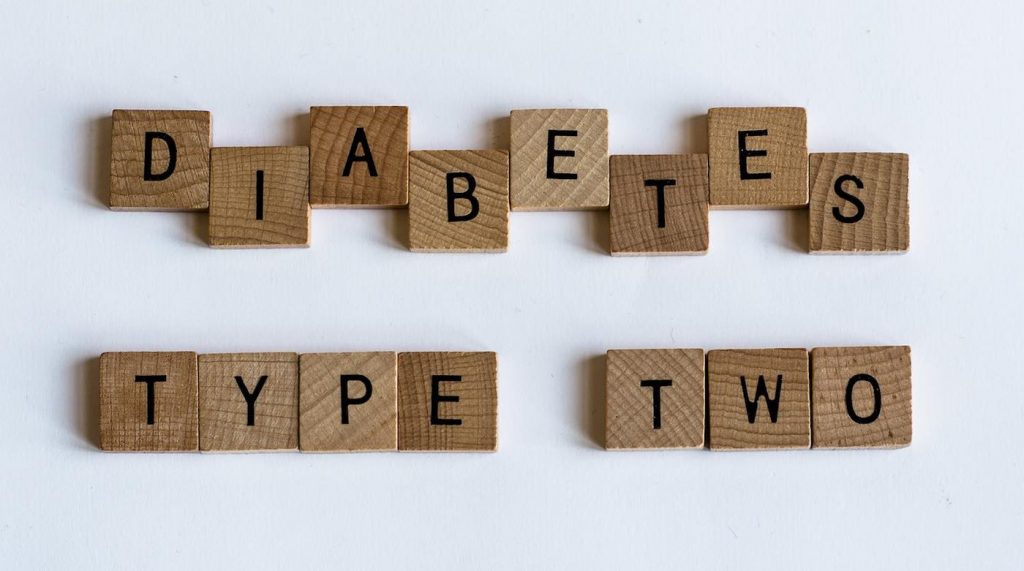
#1 Type-2 Diabetes Overview
Type 2 diabetes is a life-threatening condition that prevents the body from using insulin properly. People with this are said to be more resistant to insulin. This is a disorder of the body’s ability to manage and use glucose as fuel. This long-term condition causes a lot of sugar to circulate in the blood. Finally, high blood sugar levels can lead to disruptions in blood circulation, nerves, and immune systems.
With this, there are basically two work-related problems. The pancreas does not produce enough insulin — a hormone that regulates the movement of sugar in your cells – and the cells respond poorly to insulin and take in low sugar.
People of middle age or older are more likely to develop this type of diabetes, It was also known as adult diabetes, but it also affects children and adolescents, mainly due to childhood obesity.
About 29 million people in the United States with Type 2 diabetes, and another 84 million people have diabetes, which means they have high blood sugar (or blood glucose) but still not enough for diabetes.
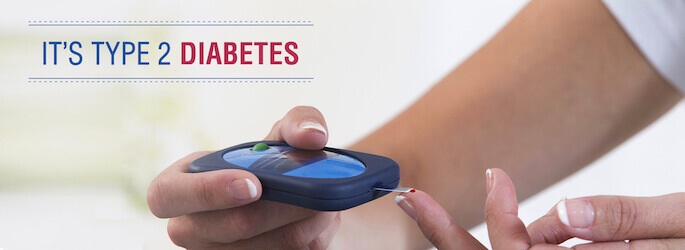
#2 Type-2 Diabetes Symptoms
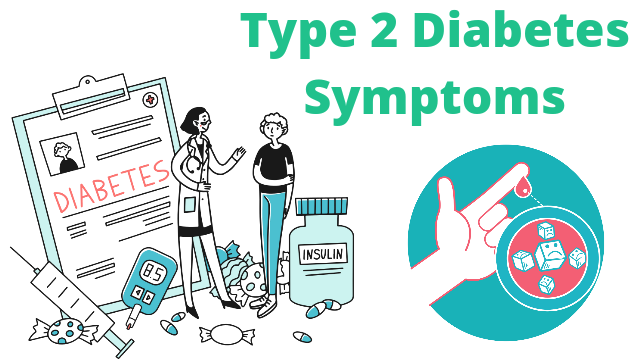
In Type 2 Diabetes, Your body cannot use insulin effectively to carry glucose into your cells. This causes your body to rely on certain energy sources in your muscles, muscles, and organs. This is a chain reaction that can cause various symptoms.
Symptoms of this tend to develop slowly. in fact, The symptoms are so mild that you can live for many years without first noticing them. About 8 million people do not know it.
While there are signs and symptoms, they can be the following:
- Being thirst
- Being angry
- Blurred vision
- Lack of energy
- Increased hunger
- Incurable wounds
- Frequent urination
- Frequent infections
- Feeling tired/fatigued
- Unexpected weight loss
- Recurrent yeast infections
- Clotting or itching of the hands or feet
- Dark areas of skin, usually in the armpit and neck
If you have dark spots on your neck or chin, see a doctor. These are called acanthosis nigricans and are a sign of an increase in your body’s insulin resistance.
As the disease progresses, symptoms worsen and serious side effects may occur.
If blood sugar levels remain high for a long time, complications can include:
- gum disease
- heart attack or stroke
- kidney disease (nephropathy)
- eye diseases (diabetic retinopathy)
- numbness or neuropathy in your limbs
#3 Causes of Type-2 Diabetes
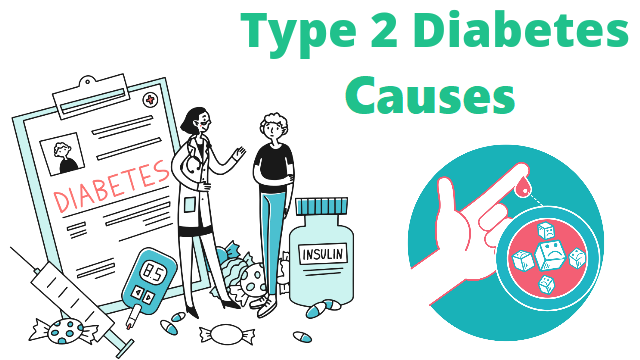
Your pancreas makes a hormone called insulin and it’s natural. This helps your cells convert glucose, the type of sugar, into energy from the food you eat. In other words, Insulin helps transport glucose to the cells of the body where it is used for energy.
If you have type 2 diabetes, then your body is resistant to insulin. Your body does not use hormones effectively. This pancreas works harder to produce more insulin.
Type 2 diabetics make insulin, but their cells do not use it properly. That means, over time, this can damage the cells of the pancreas. As a result, your pancreas cannot produce insulin.
Mostly The combination of factors causes type 2 diabetes. These may include:
- Genes: Scientists have discovered different DNAs that influence the body’s insulin production.
- Extra weight: Obesity or overweight can lead to insulin resistance, especially if you carry your extra pounds.
- Broken beta cells: If insulin-producing cells send the wrong amount of insulin, your blood sugar gets thrown off. High blood sugar can also damage these cells.
- Metabolic syndrome: People with insulin resistance usually have a group of conditions that include high blood sugar, high waist fat, high blood pressure, and high cholesterol and triglycerides.
- Poor cell communication: Sometimes cells send the wrong signals or do not receive messages correctly. When these problems affect the way your cells produce and use insulin or glucose, a chain reaction can lead to diabetes.
- A lot of glucose from your liver: When your blood sugar goes down, your liver produces glucose and sends it. After eating, your blood sugar rises, and your liver will usually slow down and store its glucose later. But some people’s livers do not. They keep cranking out sugar.
#4 Risk Factors of Type-2 Diabetes
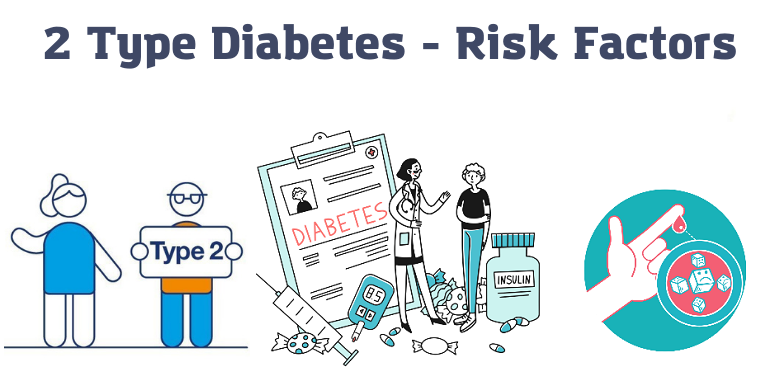
Some things can cause you to have type 2 diabetes. The more of these that apply to you, the greater your chances of getting it.
Factors that can increase your risk:
- Weight: The main problem is weight and obesity.
- Inactivity: If you are a less active person, then the risk is higher.
- Age: Especially after the age of 45, the risk of developing type 2 diabetes increases.
- Family History: If your parents or siblings have type 2 diabetes, the risk of developing it will increase.
- Fat distribution: Oil storage, especially in the abdomen – rather than hips and thighs – has many side effects. And the risk of increasing.
- Blood lipid levels: Increased risk is associated with low levels of high-density lipoprotein (HDL) cholesterol – “good” cholesterol and high triglyceride levels.
- Prediabetes: This is a condition where blood sugar levels are higher than normal, but not enough to classify as diabetes. If left untreated, it often develops into type 2 diabetes.
- Risks associated with pregnancy: Your risk of developing type 2 diabetes is greater if you develop gestational diabetes when you are pregnant or give birth to a baby weighing more than 9 pounds (4 kg).
Dark spots on the arms and neck, usually on the neck. This condition often indicates insulin resistance.
Other things that increase your risk of diabetes are related to your lifestyle and daily habits. You can do something with them:
- Practice little or not at all
- Smoking
- Stress
- Too little or too much sleep
#5 Treatment/prevention of High Blood Sugar
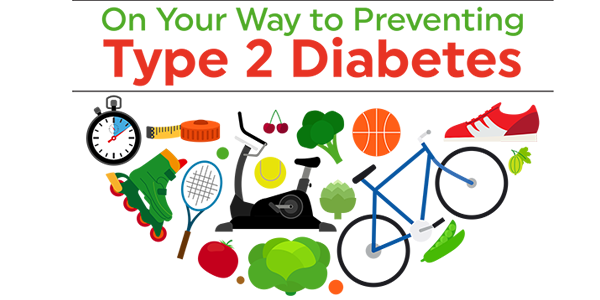
Although you may not always be able to prevent type 2 diabetes, To delay the start; Or even lifestyle changes that can help prevent it. This is true even if you have increased risk factors, such as diabetes.
Management of type 2 diabetes involves a combination of lifestyle changes and medications.
Diet and exercise alone can reach your target blood sugar level.
- Diet: The best diet to prevent type 2 diabetes is a diet rich in fruits, vegetables, healthy carbohydrates, healthy fats, and very little refined sugar.
- Exercise: According to the 2018 Physical Activity Guidelines for Americans, the optimal workout time for adults is 150 minutes per week, which can be converted to 30 minutes per day 5 days a week. The Physical Activity Instructions also recommend a combination of muscle strengthening and aerobic activity.
- Weight management: Maintaining a moderate weight is a good way to prevent chronic complications, including type 2 diabetes.
- Monitor your blood sugar: Depending on your treatment, especially if you are taking insulin, your doctor will tell you if you need to measure your blood sugar and how often.
Or you can try this to manage your blood sugar level

Here’s the natural secret you’re looking for. There’s brand-new research that shows one effective way to turn your glucose control around. This secret will finally lower your blood sugar level in just weeks… And it also helps to control weight.
Check out “Sonu’s diabetes secret” to control your Blood sugar levels.
Thank you for your valuable time, I hope this article helps you.
If you have anything on your mind as a suggestion, feel free to let me know in the comments section. I will be happy to help you.
Read Also This Article: “High Blood Pressure: You Need To Know That Now”







